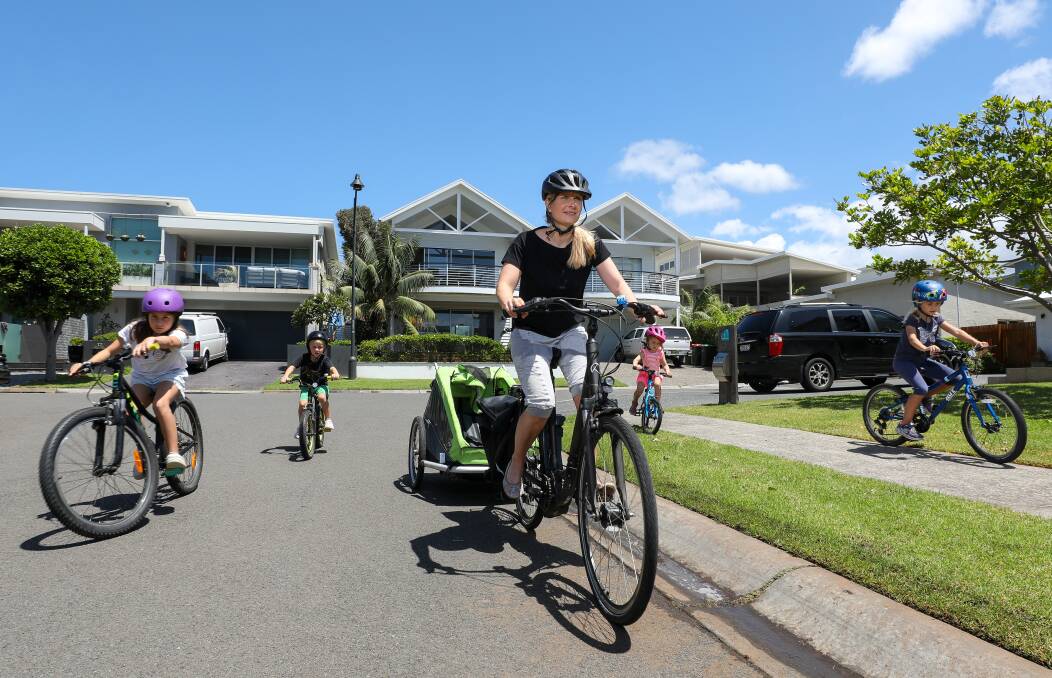
Bulli mother of four Lena Huda will do everything in her power to keep her children, safe, healthy and happy.
Subscribe now for unlimited access.
$0/
(min cost $0)
or signup to continue reading
In her role as co-founder of Safe Streets to School, Mrs Huda is constantly campaigning for safer streets around schools.
Today she took her concerns and some solution suggestions to Canberra.
Safe Streets to School is part of an alliance of 13 health, transport, education and climate organisations, which presented their "three transport priorities" to federal politicians at Parliament House.
"We urgently need to do more to keep our kids safe on the roads and to get them and their families moving more," Mrs Huda said.
"To achieve the needed change our alliance has come up with three transport priorities which we've presented to our federal politicians ahead of the upcoming election."
The three transport priorities are:
- Lower Default Urban Speed Limits in residential areas, shopping streets and school zones.
- 1500m Safe Routes to School including footpaths, pedestrian priority crossings, and 'no dropoff' zones.
- E-Bike Purchase Subsidy of up to $1000 off for customers purchasing an e-bike.
Mrs Huda said the three transport priorities were evidence-based solutions to reduce crashes, reduce congestion, and increase physical activity.
"All kids and families should be able to enjoy getting to school safely," she said.
"We started our campaign in Wollongong, a city with amazing potential for walking and cycling to school. However, many streets are too hard to cross for children and many streets lack footpaths.
"Consequently, most children are driven to school.
"Cars and children are competitors in local streets. In Australia, we have chosen cars. Probably not on purpose but the result is visible. Most children are driven everywhere and not many children are allowed to play in their local streets.
"The three transport priorities will create a better balance so that more families feel they have the option to walk or ride.
"More often than we think we need to accept that change is necessary (like reducing urban speed limits) to keep things we value (children being active and independent).
"International evidence is overwhelming that low-speed neighbourhoods are better for children's health and wellbeing and have little impact on travel times."
Fellow alliance member, Tepi Mclaughlin from the Australasian Society for Physical Activity, said national data showed almost 70 per cent of Australians backed a diversion of some government road funding for local walking and cycling infrastructure and public transport.
Two-thirds participating in the same Heart Foundation survey also supported lower speed limits in local streets to make them safer for people.
"The three transport priorities are tangible, evidence-based and popular solutions to reduce traffic crashes, reduce congestion and increase physical activity," Mr Mclaughlin said.
"They're also cost-efficient. We know that we could build a new pedestrian priority crossing outside every school in the country for the same cost as the Sydney NorthConnex tunnel."
To read more stories, download the Illawarra Mercury news app in the Apple Store or Google Play.
Sign up for breaking news emails below ...


